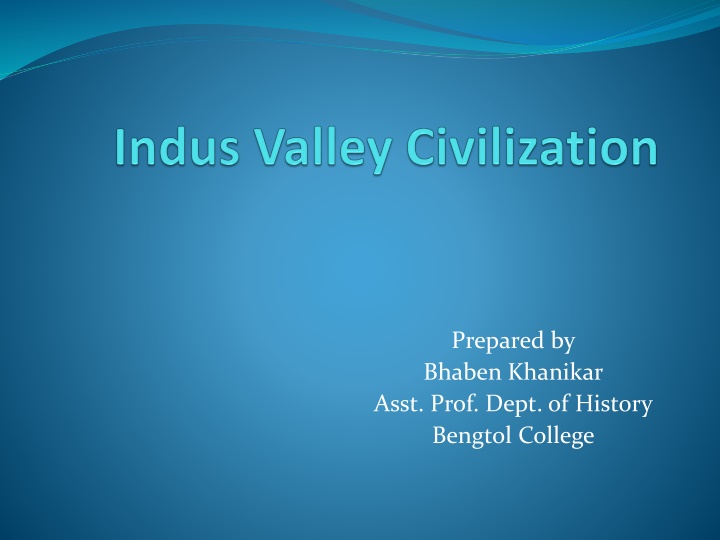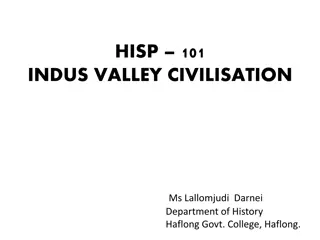
Urban Culture of the Bronze Age: The Harappan Civilization
The Harappan civilization, discovered in modern-day Pakistan, was a significant Bronze Age urban culture characterized by advanced town planning, structures, and public baths. Major sites like Harappa and Mohenjo-daro exhibit a well-organized grid system layout, indicating a centralized authority. The Great Bath in Mohenjo-daro stands out as a remarkable feat of ancient engineering, possibly used for ritual bathing.
Download Presentation

Please find below an Image/Link to download the presentation.
The content on the website is provided AS IS for your information and personal use only. It may not be sold, licensed, or shared on other websites without obtaining consent from the author. If you encounter any issues during the download, it is possible that the publisher has removed the file from their server.
You are allowed to download the files provided on this website for personal or commercial use, subject to the condition that they are used lawfully. All files are the property of their respective owners.
The content on the website is provided AS IS for your information and personal use only. It may not be sold, licensed, or shared on other websites without obtaining consent from the author.
E N D
Presentation Transcript
Prepared by Bhaben Khanikar Asst. Prof. Dept. of History Bengtol College
The urban culture of the Bronze age found in Harappa in Pakistan (Punjab province) was a path breaking discovery. In 1853 A. Cunningham, the British engineer who becamea great excavator and explorer. Noticed a Harappan Seal. Much laterin 1921 Indian archaeologist Daya Ram Sahni who excavated at Harappa and R.D.Banerjeeexcavated the site of Mohenjodaro in Sindh.
Why it was known Harappa It is called Harappa because this civilization was discovered first in 1921 at the modern site of Harappa situated in the province of Punjab in Pakistan. The Central zone of this mature Harappan culture lay in Sindh and Punjab, principally in the Indus valley. From there it spread south wards and eastwards. In this way, the Harappan culture covered parts of Punjab, Haryana, Sindh, Baluchistan, Gujarat, Rajasthan, and the fringes of western UP. The area formed a tringle and around for about 1299600sq.km which is a large area that of Pakistan, and certainly large than ancient Egypt and Mesopotamia
Harappan Sites Nearly 2800 Harappan sites have so far been identified in the subcontinent. The two most important cities were Harappa in Punjab and Mohenjadaro( litrrally, the mound of the dead) in Sindh, both forming parts of Pakistan. A third city lay at Chanhu-daro( sindh) and a fourth at Lothal in Gujarat. A fifth city lay at Kalibangan ( in northern Rajasthan). A sixth called Banawali( Haryana)
Features of Harappa Town Planing and Structures:- The Harappan culture was distinguished by its system of town planing. Both Harappa and Mohenjadaro had a citadal and this was possibily occupied by members of the ruling class. Both the citadal in each city lay a lower town with brick houses, that were inhabited by the common people. The remarkable thing about the arrangmentof the houses in the cities is that they followed a grid system, with roads cutting across one another virtually at right angles. The monuments of the cities symbolished the ablityof the ruling class to mobilize labour and collect taxes, the huge brick constructions were a means of impressing upon the common people the prestige and influence of their rulers.
Great Bath The most important public place of Mohenjadaro seems to have been the Great Bath, comprising the tank which is situated in the Citadel mound. It measures 11.88 x 7.01m and 2.43 m deep. Flights of steps at either end lead to the surface and there are side rooms for changing clothes. The floor of the bath was made of burnt bricks. Water was drawn from a large well in an adjacent room and an outlet from the corner of the bath led to a drain. It has been suggested that the Great Bath was primarily intended for ritual bathing.






















